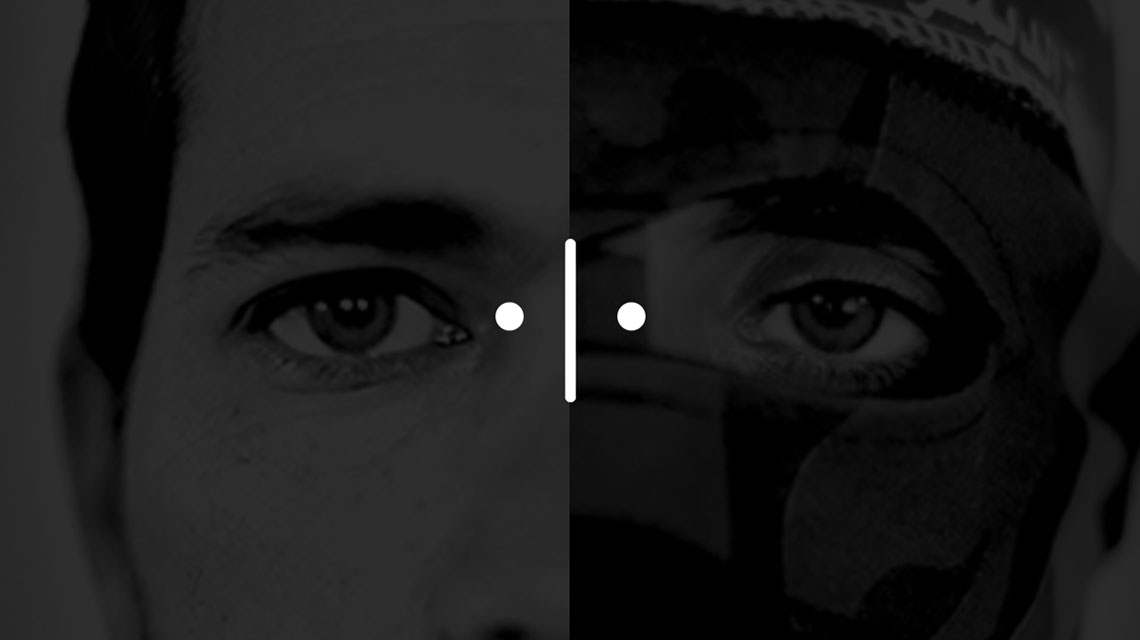
“What is the point of images of war if they don’t change people’s attitudes towards armed conflicts? What is the point if they don’t help create peace?”
This question was the foundation to create a mixed reality project The Enemy. But the new question now is, if images couldn’t do this can an immersive project do?
The Enemy, is a unique immersive project applying specific new techniques to create an AR app offering a totally new level of augmented reality that gives the user a whole new level of interaction with the real world like never before, alongside this a multiuser VR museum installation was also created. The app can be downloaded free on iOS and Android, this is available in two languages English and French which makes the project accessible to a wider audience.
The Enemy was created by award-winning photojournalist Karim Ben Khelifa in October 2017, targeting the next generation of combatants and more specifically 17 to 21 years old fighters who have not fought yet based on his interview with Sandra Gaudenzi.
The project introduces us to a number of combatants from opposing sides, who got involved in three different conflicts; Palestine/Israel, Congo, and El Salvador by showing them in exclusive encounters talking about the war from their perspectives. In this article, I am going to talk more in-depth about the Enemy AR app as I couldn’t experience the VR installation.
As soon as opening the app, I was asked to allow the app to use the camera, after accepting this I was then asked to use headphones and move to a place where there would be enough room to move around freely. Then the back camera of my phone was on to use my space to create the backdrop of the project interface. By moving in 360 degrees I was able to see photos of 6 different fighters with a name under each photo. A voice over recorded by the author was accompanying this asking me to choose which fighter I wish to learn more about and gain further insights into his story.
Once I clicked on one of the photos the voice over started playing a brief on that particular character and gave me more information about the conflict he is involved in. There is always an arrow in the bottom to skip this if you don’t want to hear this introduction. But from my perspective, it was really important as I could understand after this information the background of the person I am going to listen to
Once the brief finished, I could see the fighter as a 3D character standing in front of me in my personal space, just a few steps away from me, with the voice over telling me that his enemy is behind me which made me immediately turn the mobile to find the enemy. This defines the project as applying exploratory mode in reactive style of interactivity.
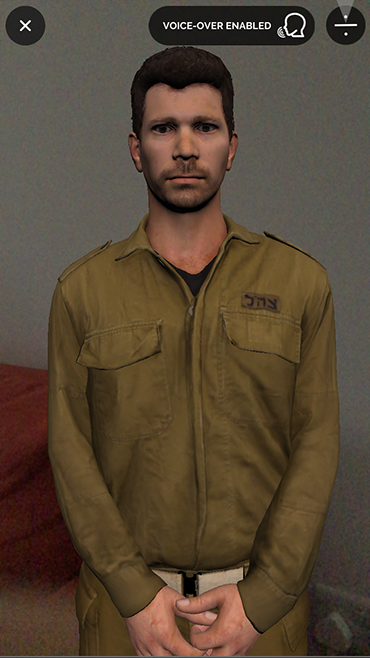
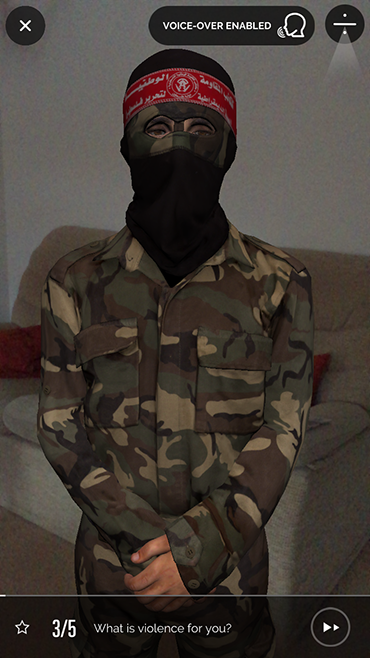
The author’s aim here was to place the fighter face to face with his enemy and in the same time face to face with me, the user. This concept was clear in designing the logo of the project, which was designed in a way to serve the purpose of the project where it shows a line with two dots to represent the character and the enemy on either side of the conflict. Also, when I was moving, the logo was giving out a light on the side to represent who I am listening to at that time.
This design reminded me of another project called Gaza Sderot done by Arte in 2009 which is a fascinating interactive documentary telling multiple stories in an interesting way with a very good design applied to tell stories of several people on two different sides of the boarder; Palestine and Israel with a split line between the two groups of people which puts the users in a place where they can listen to two different views of people in conflict. From my point of view The Enemy may have got inspiration from Gaza Sderot in terms of the concept and the design.
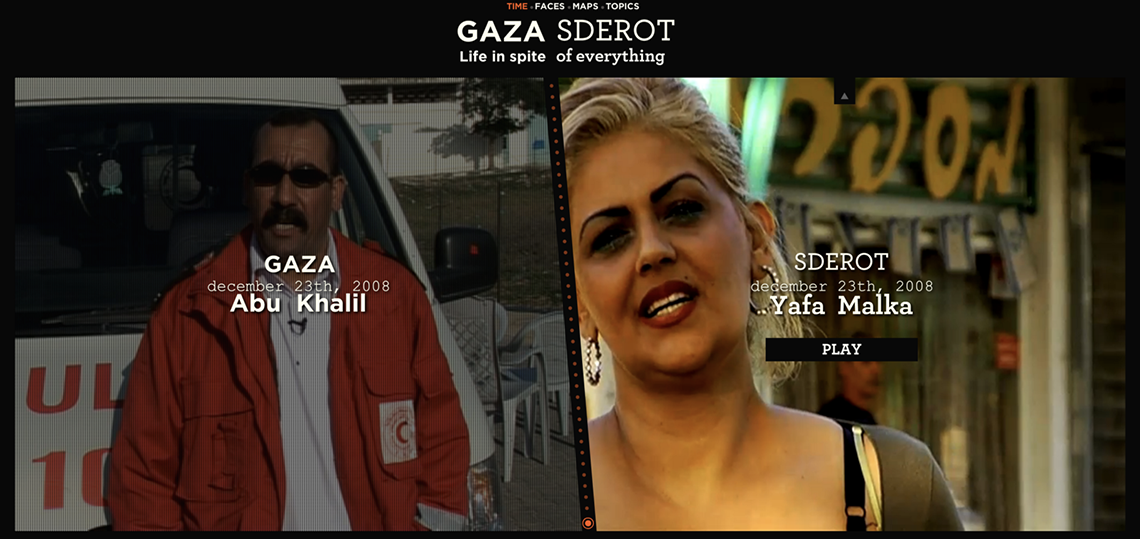
Going back to The Enemy, after I faced the character and got introduced to his enemy, a series of questions starts and are asked to the main character and his enemy by the voice over. The interviews were original interviews where the character was talking in his mother language with the voice over playing a translation here I had the opportunity to either keep it on or switch it off. However, at this point I had a concern that I couldn’t choose the questions that were asked to the character! As a user, I might not be interested in this specific question or I wanted to ask another one.
This reminded me of a project I have experienced before called Journey To The End Of Coal, an interactive documentary web done by Samuel Bollendorff and Abel Ségrétin in 2008. The project was showing the depths of coal mines in China by positioning the users as an investigative journalist to go through the cities and meet different people, government officials, truck drivers, pollution victims and coal mine workers who risk their lives every day, it also gives the users the chance to ask them different questions. In this project, the user was given two different options of questions to ask the interviewee which made me feel that I have more freedom. However, in The Enemy, in my opinion, the author intentionally didn’t give options of questions as he wanted to focus on specific topics to deliver the project’s purpose.
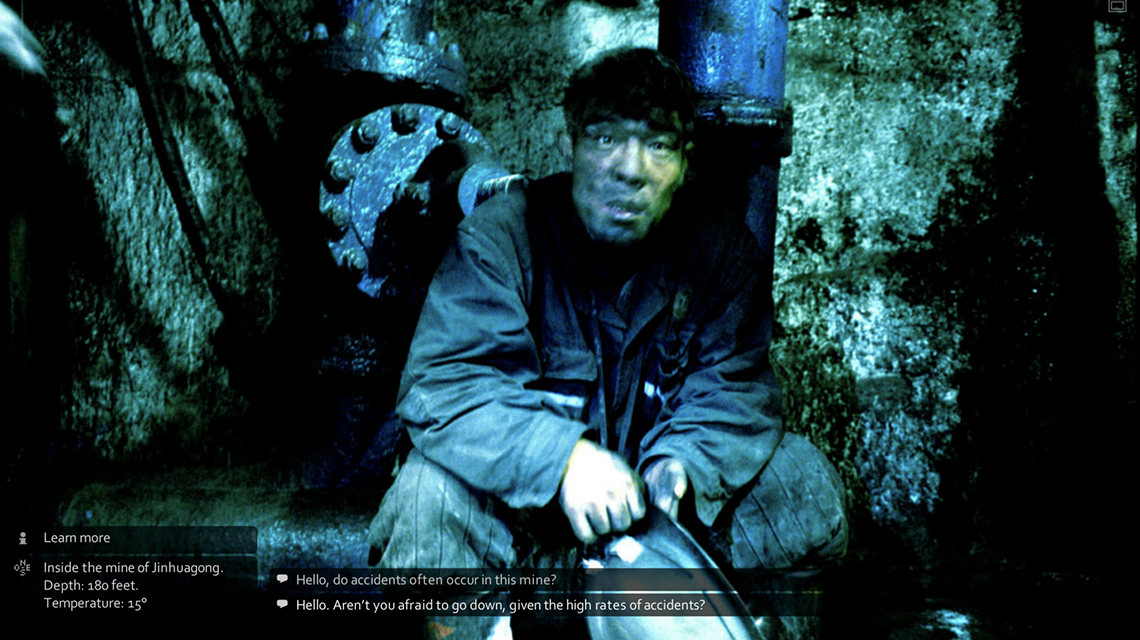
At the end of each interaction with the character and his enemy, there were prompts to find out about the user’s feelings after hearing the two different perspectives and there were 4 different ways to engage more with the story by; sharing a quote from the encounter, sharing my code, sharing my opinion and sharing my map. However, I don’t think it works well as there is no description about what my code means also some of the options didn’t work.
There was another screen which is a map, where I could choose to use it personal or global. When I chose global it showed me the different perceptions of war on the map in different locations and I could filter it based on a specific perception, this gave an idea about how people in different location think about war or in more correct way how the people thinking about the war after this project. It could be better if they add numbers not only charts or points that would give more accurate information.
I have to say that I found applying these kinds of stories to an AR project becomes more meaningful. To bring the characters out of just a story and make them come to life by using AR to make it feel like I am in the same room as them bought more excitement to the story. In my perspective it gave me more of a feeling of evolvement, by bringing the fighters to me in this way I felt comfortable being able to interact with them whereas I wouldn’t normally in a real life situation. This is a better way to portray a story than just seeing it play out on the news, as I believe it can give people more empathy with the characters myself included.
This leads me back to my original question of Can an immersive project change the people’s attitudes towards armed conflicts? Another question that was asked was can it help create peace? My opinion of these questions is that there is not a project of any type that has been able to stop war at present, however projects like this can certainly help. The documentation of war has certainly developed from black and white images to colour images to video over the years, however all these changes have as yet not stopped the world from further wars, it also has not changed the fighters’ perspectives of war. The fact that still these days we have wars taking place in several locations around the world prove that by only changing the medium of storytelling will not create peace. But by changing the medium of a story this might help in showing the facts in a more interesting way and make people care more about the topic.
In this specific project, from my point of view, targeting the future fighters wasn’t the ideal targeted audience, even if they were to have a look through this project how would that affect their opinion about war? Are they going to give up what they are fighting for? Are they the decision makers, do they have the ability to stop the war? The project might work better and might have a larger impact in creating peace if it was targeted more at the publics opinion.
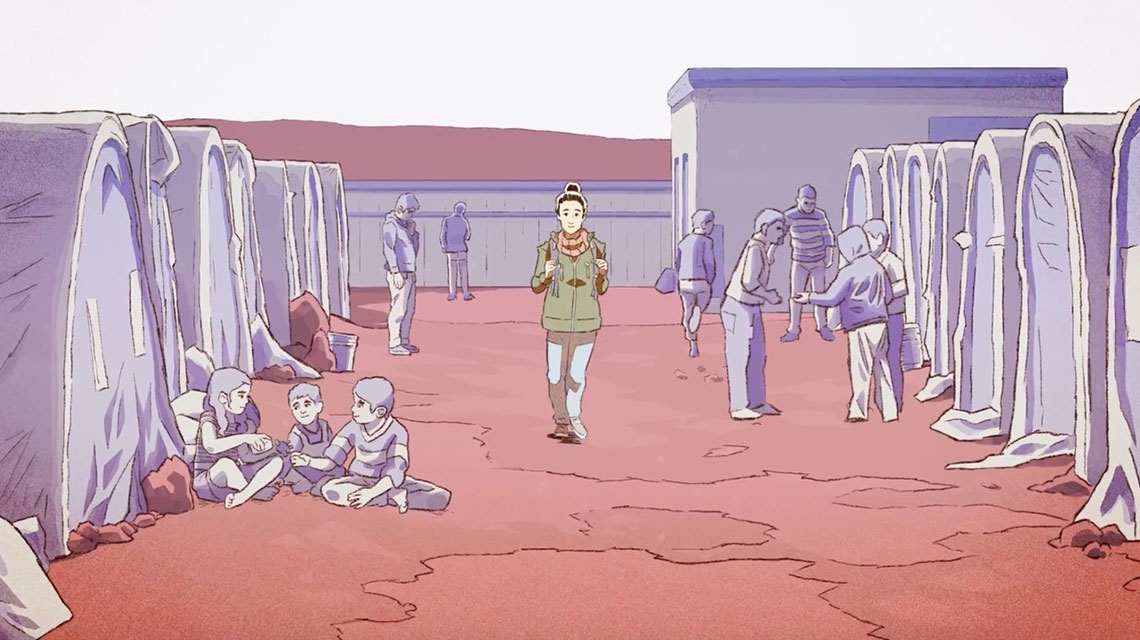
Games are no longer just a matter of thrill or entertainment, they are now stretching human…

“When you place these headphones onto your head all the imagery is from you”..
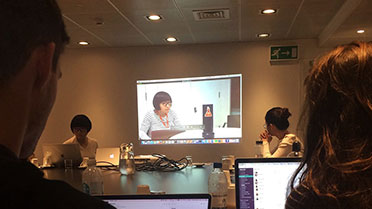
I knew it wouldn’t be an ordinary visit but I wasn’t ready to be impressed as much as I was…
I’m always on the lookout for a good story, so if you think you have one—or just want to say hello—drop me a line.
Request quote